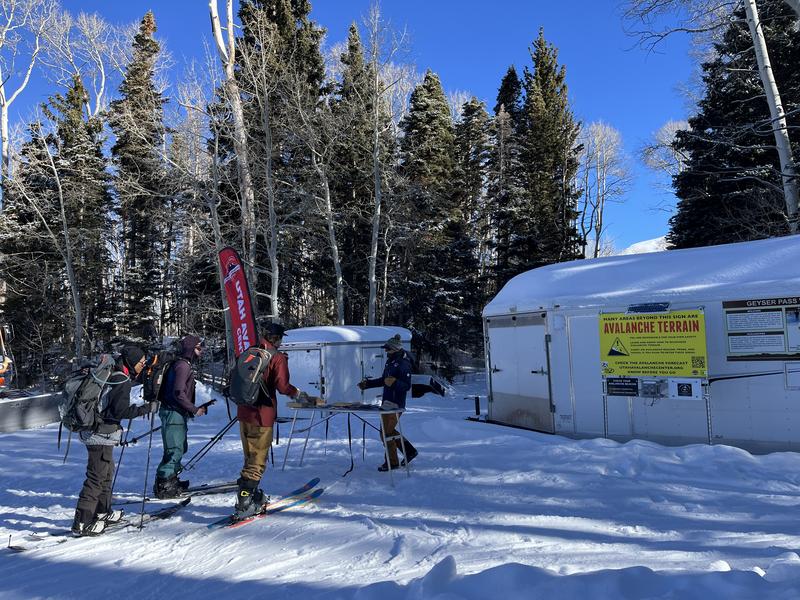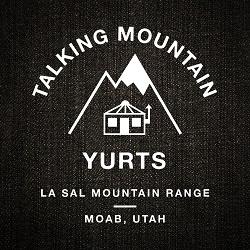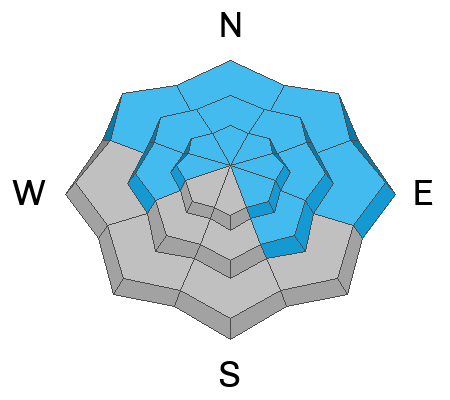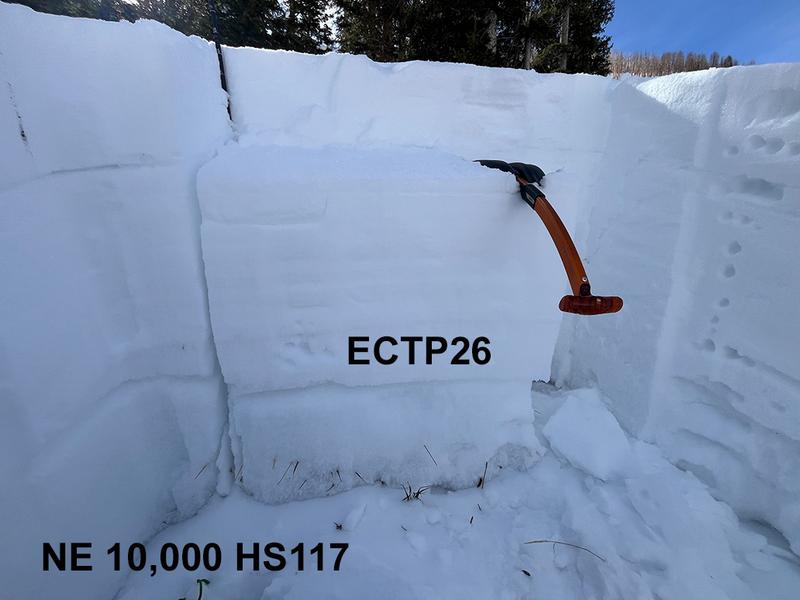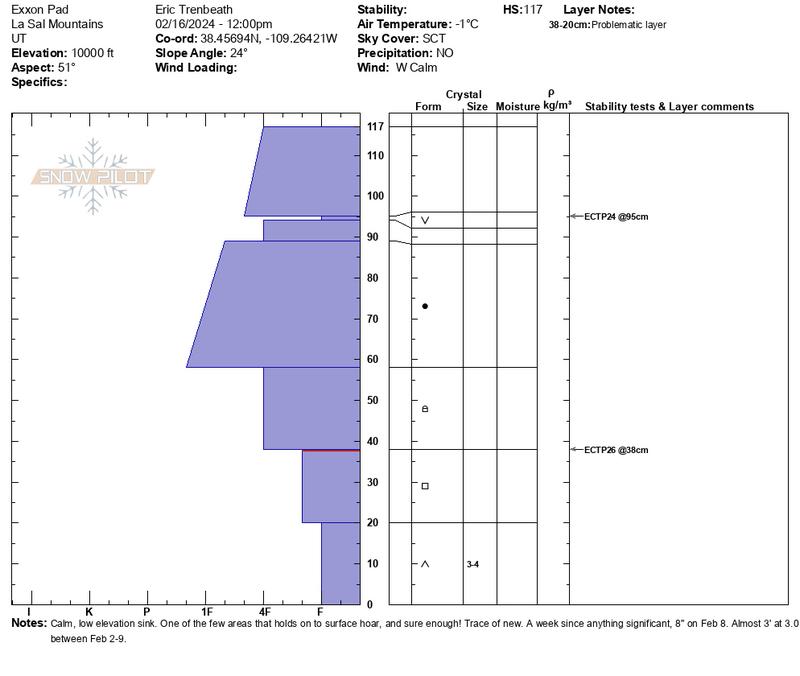Forecast for the Moab Area Mountains

Issued by Eric Trenbeath on
Monday morning, February 19, 2024
Monday morning, February 19, 2024
The avalanche danger is MODERATE. The likelihood continues to decrease but deep and dangerous, human triggered avalanches failing on a buried persistent weak layer remain possible on steep slopes that face W-N-E-SE with the greatest danger existing on slopes facing NW-N-E. If you venture into avalanche terrain, minimize your risk by avoiding thinner snowpack areas; rocky, radical terrain; and slopes with complex terrain features.
There may be a few shallow slabs of wind drifted snow lurking about on northerly aspects above treeline. Fresh drifts generally have a smooth rounded appearance and cracking is a sign of instability. Older, stiff slabs may sound or feel hollow underneath.
A generally LOW danger exists on slopes facing S-SW.

Low
Moderate
Considerable
High
Extreme
Learn how to read the forecast here



